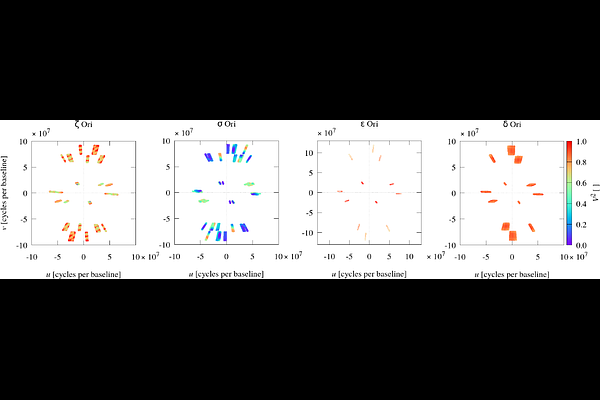VLTI observations of the Orion Belt stars: I. eps Orionis

VLTI observations of the Orion Belt stars: I. eps Orionis
Alžběta Oplištilová, Miroslav Brož, Christian A. Hummel, Petr Harmanec, Brad Barlow
AbstractMassive stars play a decisive role in the evolution of the Universe. In order to constrain their current state and structure, we need sufficiently complex models, constrained by astrometric, interferometric, and spectroscopic observations. However, they are not available for distant stars. Instead, we focused on the nearest massive stars in the Orion Belt. We obtained VLTI interferometric observations of Orion Belt stars and calibrated visibility data from the GRAVITY and PIONIER instruments. Additionally, we obtained spectroscopic data from the CFHT and CTIO observatories. For modelling, we used a modified version of PHOEBE2, extended with new interferometric and spectroscopic modules. To describe non-spherical, rotating, or Roche-like stars, integrals over triangular meshes have to be computed, using extensive grids of synthetic spectra. For fitting, we used the simplex algorithm and chi2 mapping of the parameter space. In this paper, we present single-star models of the B0Ia supergiant eps Ori. Interferometric visibilities indicate that the star is not spherical but rotating close to its critical velocity. The preferred distance, d=(384+-8)pc, corresponds to the median of distances for the Orion OB1b association. We obtained the following parameters: m=(28.4+-2.0)Msol, R=(27.6+-1.5)Rsol, Teff=25000 K, i=45deg, longitude of the ascending node, Omega=300deg, and Prot=4.3+1.0d. This compromise model provides a reasonable fit to wind-free Balmer line profiles, but there is still some tension between interferometric and spectroscopic datasets, corresponding to a faster- vs. slower-rotating star. Our fast-rotating model implies that circumstellar matter should be naturally present, in the form of wind or disk, and contribute to continuum radiation. The fast rotation of eps Ori is compatible with a merger, formed from a multiple system of comparable mass, like del, zet or sig Ori.